Table of Contents
The Bahamian flag, officially known as the flag of The Bahamas, holds a significant place in the nation’s history and culture, representing the identity and heritage of the Bahamian people. With its distinctive colors and symbolic design, the flag stands as a strong symbol of unity and pride. In this article, we will explore the fascinating aspects of The Bahamas’ flag, delving into its design, historical background, and the symbolism behind its elements.
The Bahamian flag consists of three horizontal bands of aquamarine, gold, and aquamarine, with a black equilateral triangle on the hoist side. The flag’s colors and triangle convey deep symbolic meaning for the Bahamian people, reflecting the nation’s values, aspirations, and historical significance.
The Bahamas Flag: Colors and Symbolism
- The flag of The Bahamas features three horizontal bands of aquamarine, gold, and aquamarine. On the hoist side is a black equilateral triangle. Each color and shape holds specific meaning for the Bahamian people.
- The aquamarine bands represent the crystal-clear waters surrounding the islands, reflecting the nation’s geographical beauty and the importance of the sea to the Bahamian economy and culture.
- The gold band symbolizes the golden beaches and the vibrant sunshine that blesses the nation, capturing the warmth and hospitality of the Bahamian spirit.
- The black triangle stands for the strength, resilience, and determination of the Bahamian people, symbolizing their united efforts to work together for a prosperous future.
Flag of The Bahamas
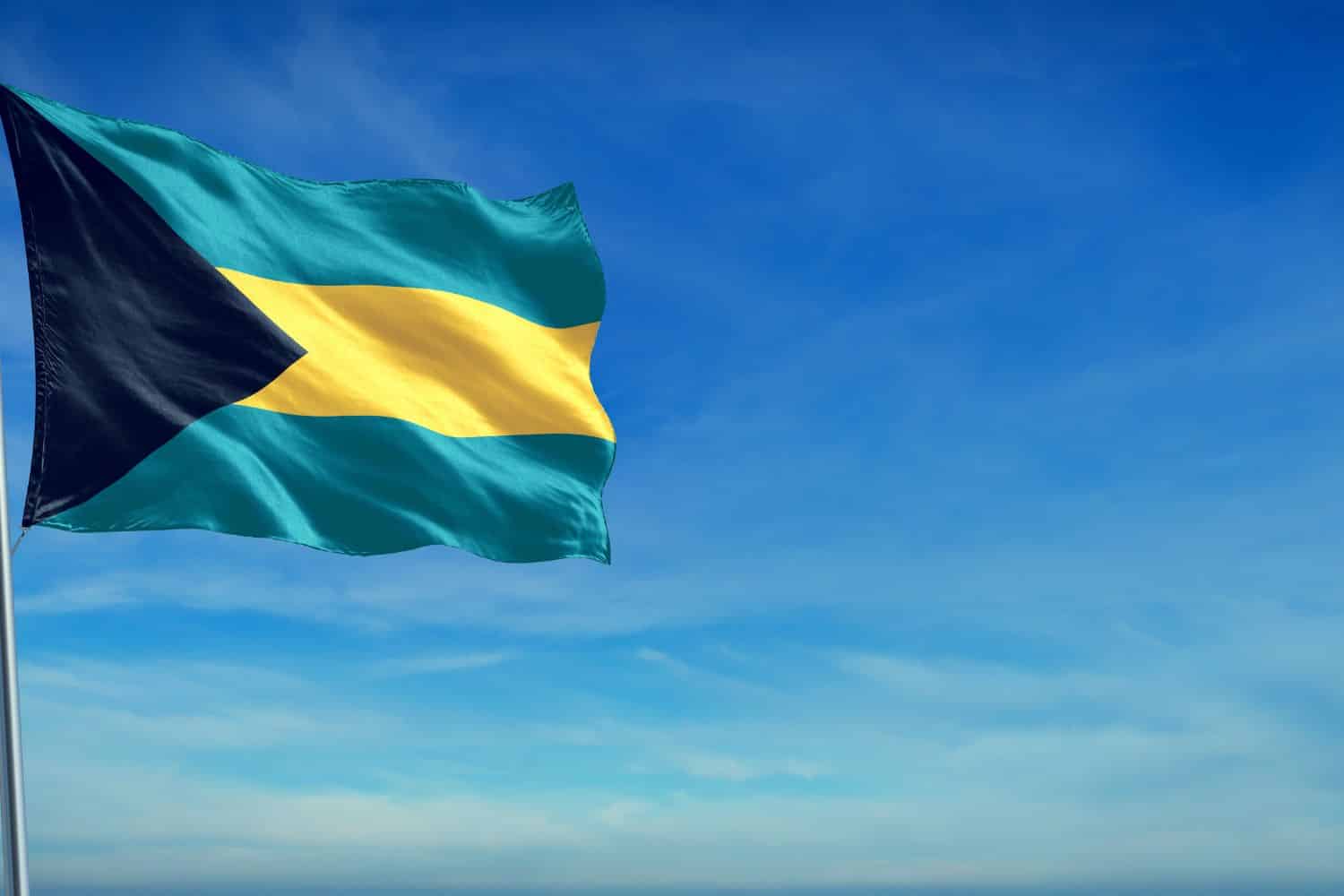
The flag of The Bahamas features three horizontal bands: aquamarine, gold, and aquamarine from top to bottom, with a black equilateral triangle on the hoist side.
The aquamarine bands at the top and bottom symbolize the stunning turquoise waters surrounding the Bahamian islands. They reflect the natural beauty of the archipelago and the central role of the sea in the nation’s culture and economy.
The gold band in the middle represents the sunlit golden beaches that draw tourists from around the world. It embodies the warmth, optimism, and bright spirit of the Bahamian people, reflecting their hospitality and positive outlook for the future.
The black triangle signifies the strength, resilience, and determination of the Bahamian people, capturing their unwavering resolve to work together for progress and prosperity.
National Flag Etiquette and Protocol
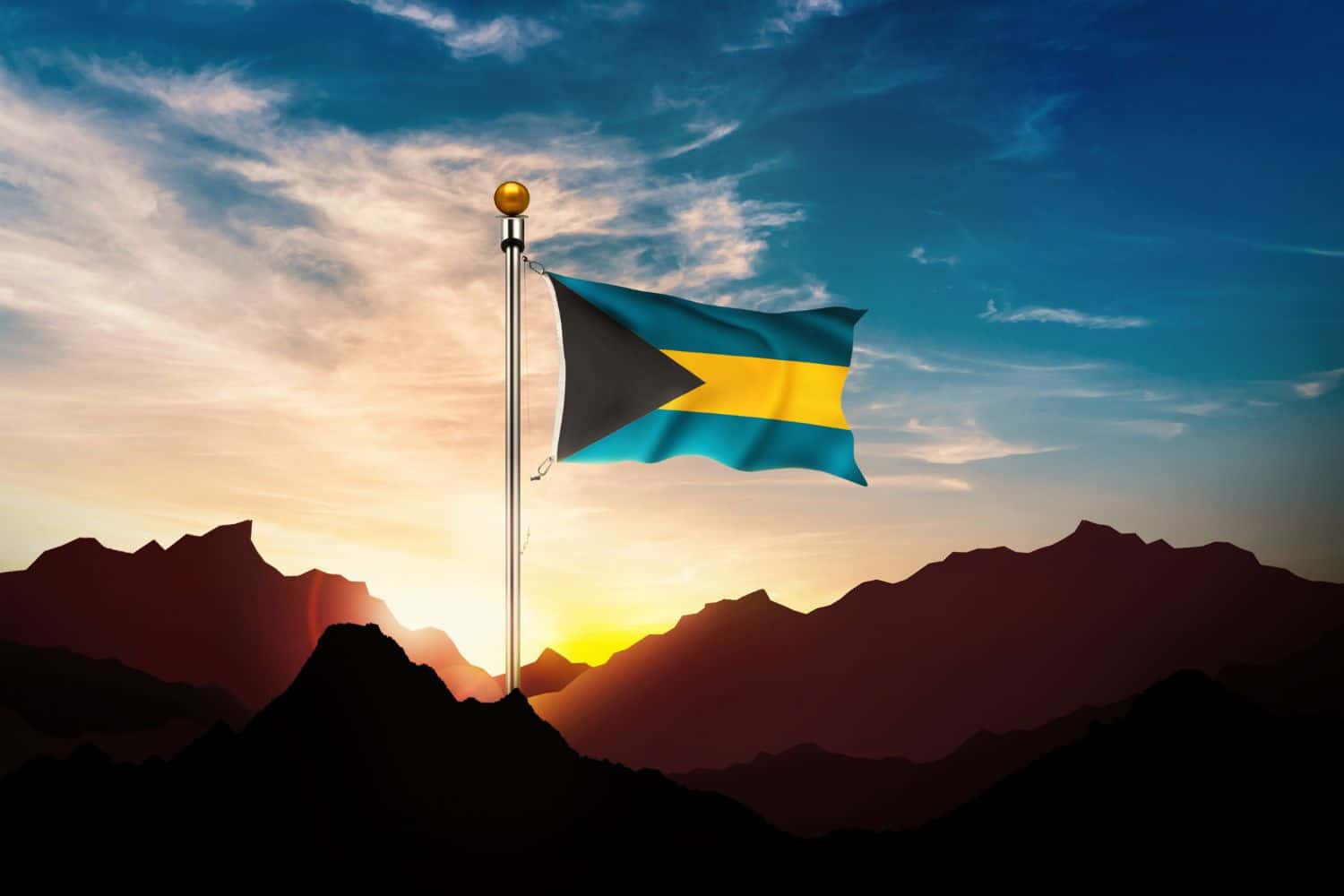
Respecting the proper usage and display of The Bahamas flag is essential to honor the nation’s heritage. Understanding the correct flag etiquette, especially during national events and ceremonies, is crucial. Here are the protocols for handling, hoisting, and retiring the flag to ensure it receives due respect:
- Proper Handling: The flag should be handled with care and respect. Ensure it does not touch the ground or floor, and that it is held upright without dragging.
- Hoisting and Lowering: Hoist the flag briskly and lower it ceremoniously. The flag is traditionally hoisted at sunrise and lowered at sunset. Follow any special guidelines provided for occasions or events.
- Displaying the Flag: When displaying the flag vertically, the aquamarine band should be at the top and the gold band in the middle, followed by the aquamarine band at the bottom. Make sure the flag is freely flown and not obstructed.
- Half-Staff: Lowering the flag to half-staff is a mark of mourning or respect. This should be done on designated days of remembrance or as instructed by authorities in response to national tragedies or the passing of important figures.
- Flag Retirement: When a flag is damaged, worn out, or no longer suitable for display, it should be retired respectfully. Follow national or local guidelines for flag retirement, which often includes burning it in a respectful ceremony.
- Flag Size and Placement: The flag size should be proportionate to the flagpole or display area. Consult national guidelines or local authorities to ensure the correct size and positioning.
- Respectful Disposal: If a flag cannot be retired through burning, dispose of it respectfully. Consider burying it or handing it over to authorized organizations specializing in flag disposal.
Interesting Facts and Trivia
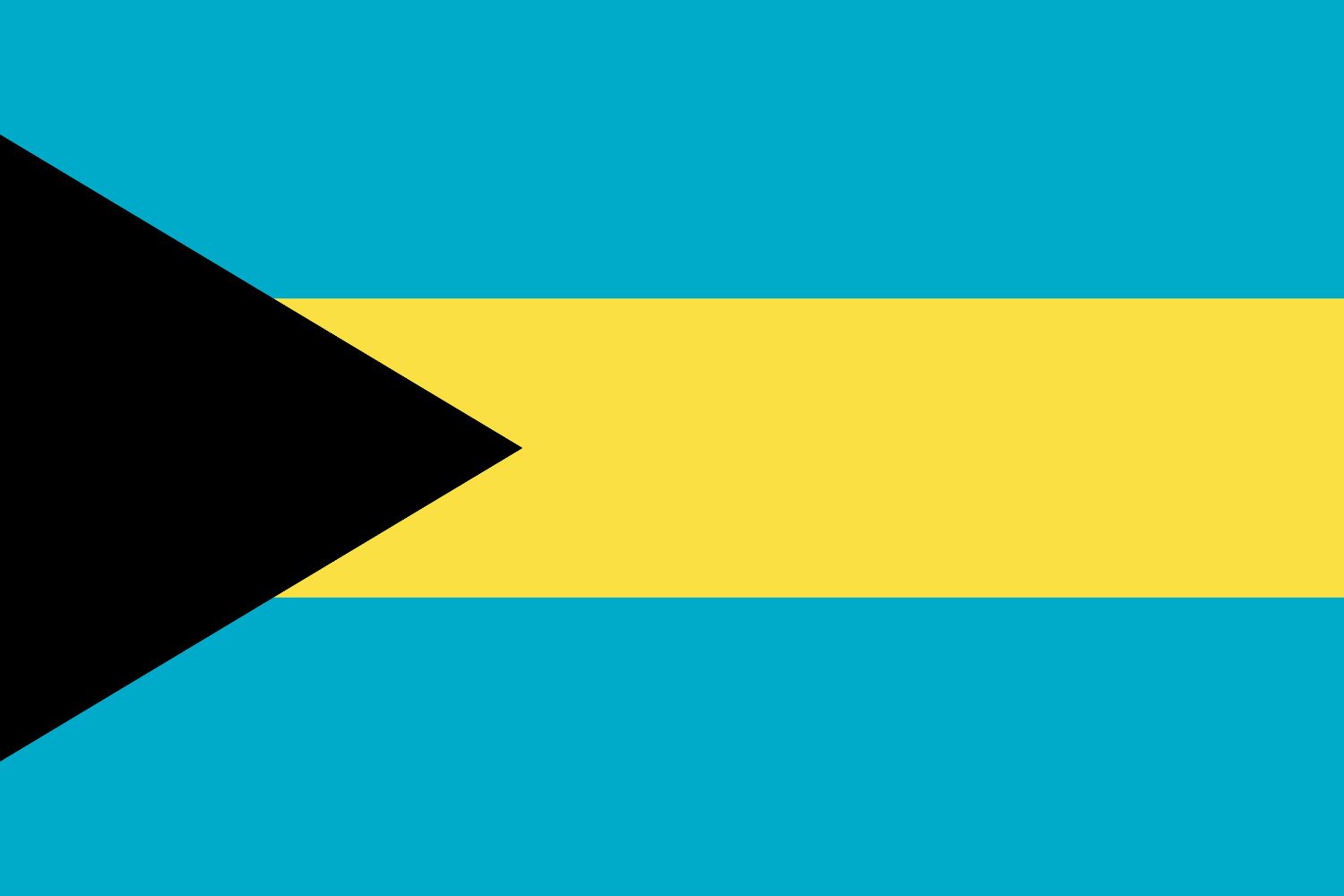
Embark on a journey through the fascinating history and lesser-known trivia about The Bahamas flag. Discover the unique symbolism embedded within its design and the stories of notable incidents involving the flag that have shaped the nation’s identity.
A Rich Tapestry of History
- 1973: The Bahamian flag was adopted on July 10, 1973, the same day The Bahamas became an independent nation. This marked the end of its status as a British colony and symbolized the country’s emergence as a sovereign state.
- Design Origins: The flag’s design was the result of a national competition, with input from several entries. The final combination of colors and shapes reflects the aspirations of the newly independent nation.
- Symbolic Interpretation: The aquamarine color was chosen to represent the sparkling waters that surround the islands, while gold symbolizes the golden sands of the Bahamas’ beaches. The black equilateral triangle represents the strength and determination of the Bahamian people to develop and utilize their resources.
- Global Recognition: The distinctive design has made The Bahamas flag easily recognizable worldwide, representing the vibrant culture, natural beauty, and optimistic outlook of the Bahamian people.
Flag-Related Symbols and Emblems
A flag often shares the role of representing a nation’s identity with other important symbols and emblems. Explore the additional national symbols of The Bahamas, their significance, and how they relate to the flag, revealing the historical and cultural roots that enrich the country’s heritage.
Symbolisms of The Bahamas Flag
The Bahamas flag includes symbolic elements that represent the nation’s values, natural beauty, and aspirations. Here’s an itemized presentation:
- Aquamarine Bands: Symbolize the crystal-clear waters surrounding the islands, representing The Bahamas’ natural beauty and the importance of the sea for culture and commerce.
- Gold Band: Reflects the golden beaches and the radiant sun, capturing the warmth and hospitality of Bahamian culture.
- Black Triangle: Stands for the strength, determination, and will of the Bahamian people to make the best use of their natural resources and work toward a prosperous future.
These symbols, together with the flag, contribute to the rich national identity of The Bahamas, reflecting its unique heritage, cultural values, and aspirations.
Flags of Similar Countries or Regions
Examining flags of neighboring countries or regions can provide fascinating insights into shared symbolism and differences that highlight each nation’s unique identity. Let’s explore the similarities and differences between The Bahamas’ flag and those of neighboring or culturally significant regions.
Bahamian Flag vs Jamaican Flag
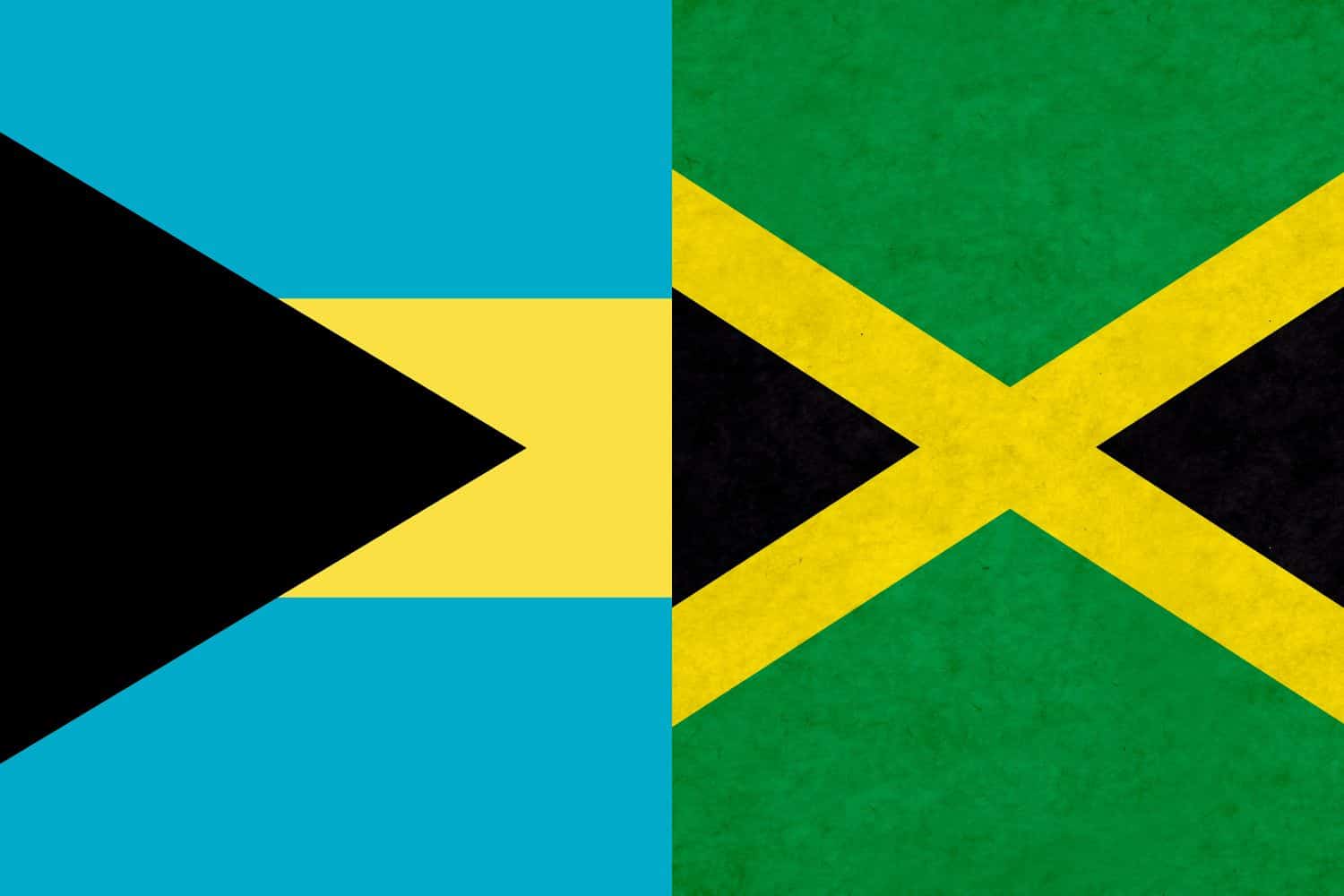
Similarity: Both flags feature vibrant and contrasting colors that symbolize the natural beauty of their respective nations.
Difference: The Jamaican flag is divided diagonally by a gold cross, forming triangular sections of green and black. The Bahamian flag has horizontal bands of aquamarine, gold, and aquamarine with a black equilateral triangle on the hoist side.
Bahamian Flag vs. Cuban Flag
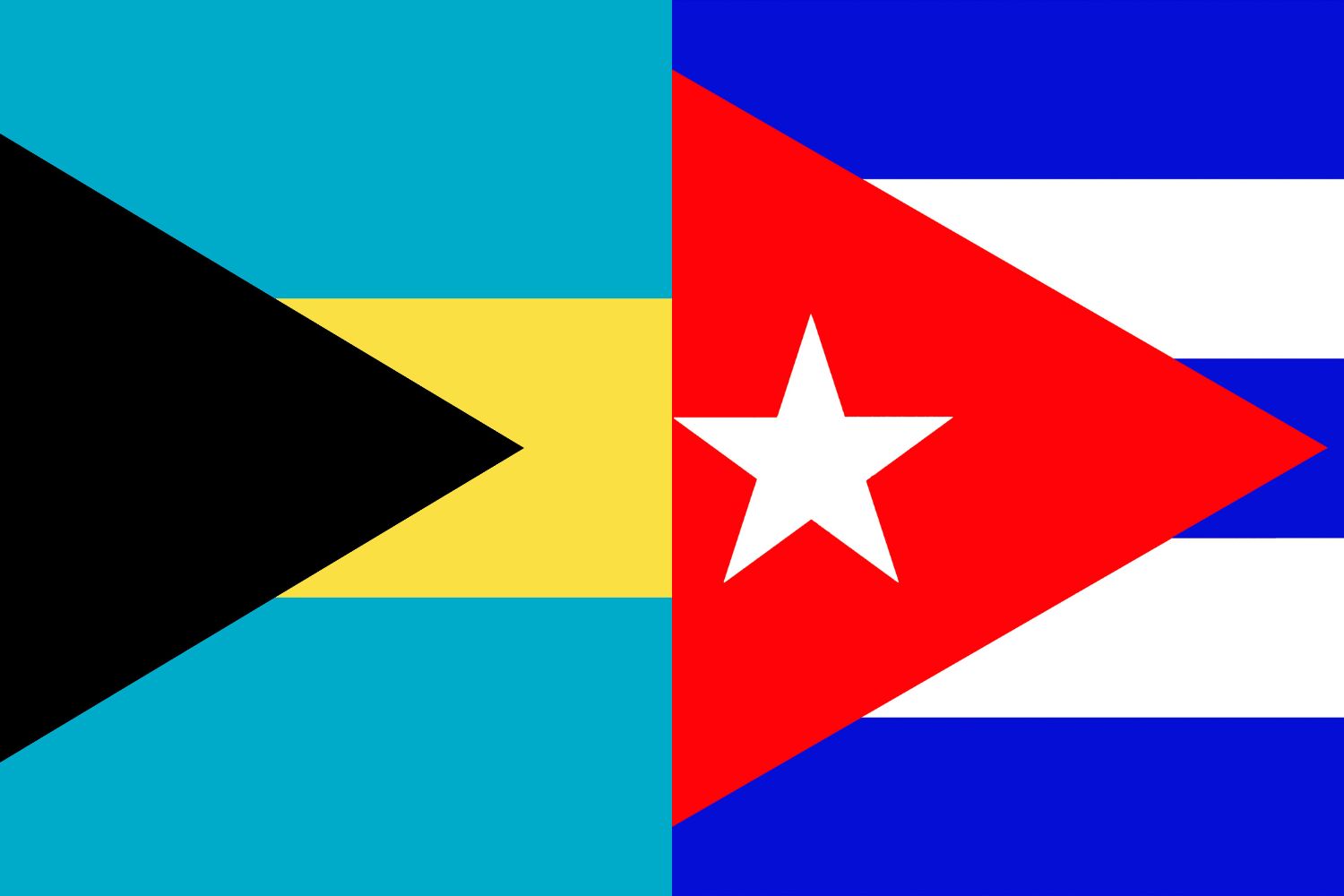
Similarity: Both flags incorporate bold and striking geometric shapes and colors.
Difference: The Cuban flag has five horizontal stripes of blue and white, with a red triangle on the hoist side containing a white star. The Bahamian flag features three horizontal bands of aquamarine, gold, and aquamarine with a black triangle on the hoist side.
Bahamian Flag vs. Barbados Flag
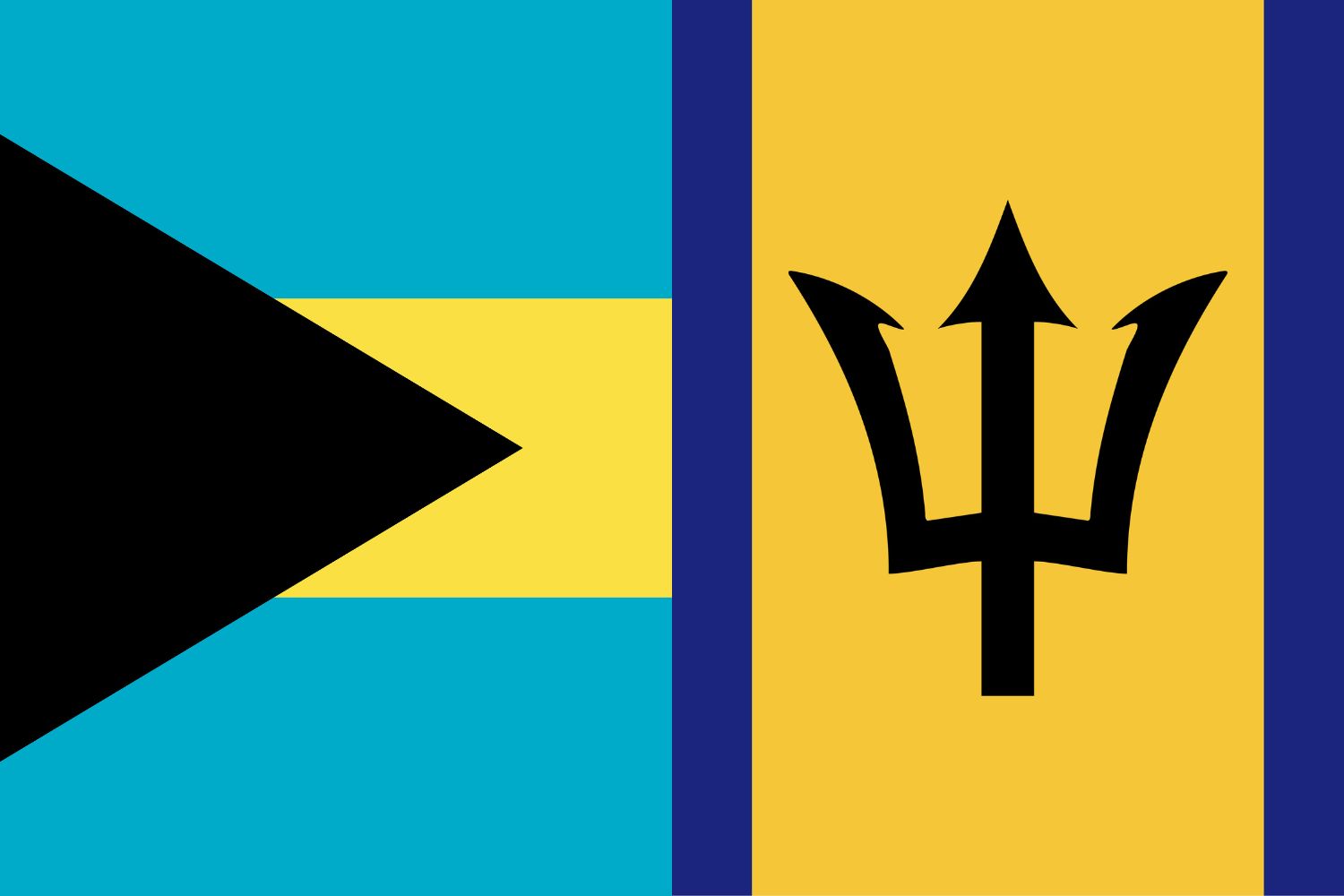
Similarity: Both flags symbolize their island nations’ rich marine life and vibrant spirit through color choice.
Difference: The Barbadian flag is divided into three vertical bands: ultramarine blue, gold, and ultramarine blue. The central gold band is adorned with a black trident. The Bahamian flag, by contrast, has horizontal bands of aquamarine, gold, and aquamarine with a black triangle.
Bahamian Flag vs. Turks and Caicos Islands Flag
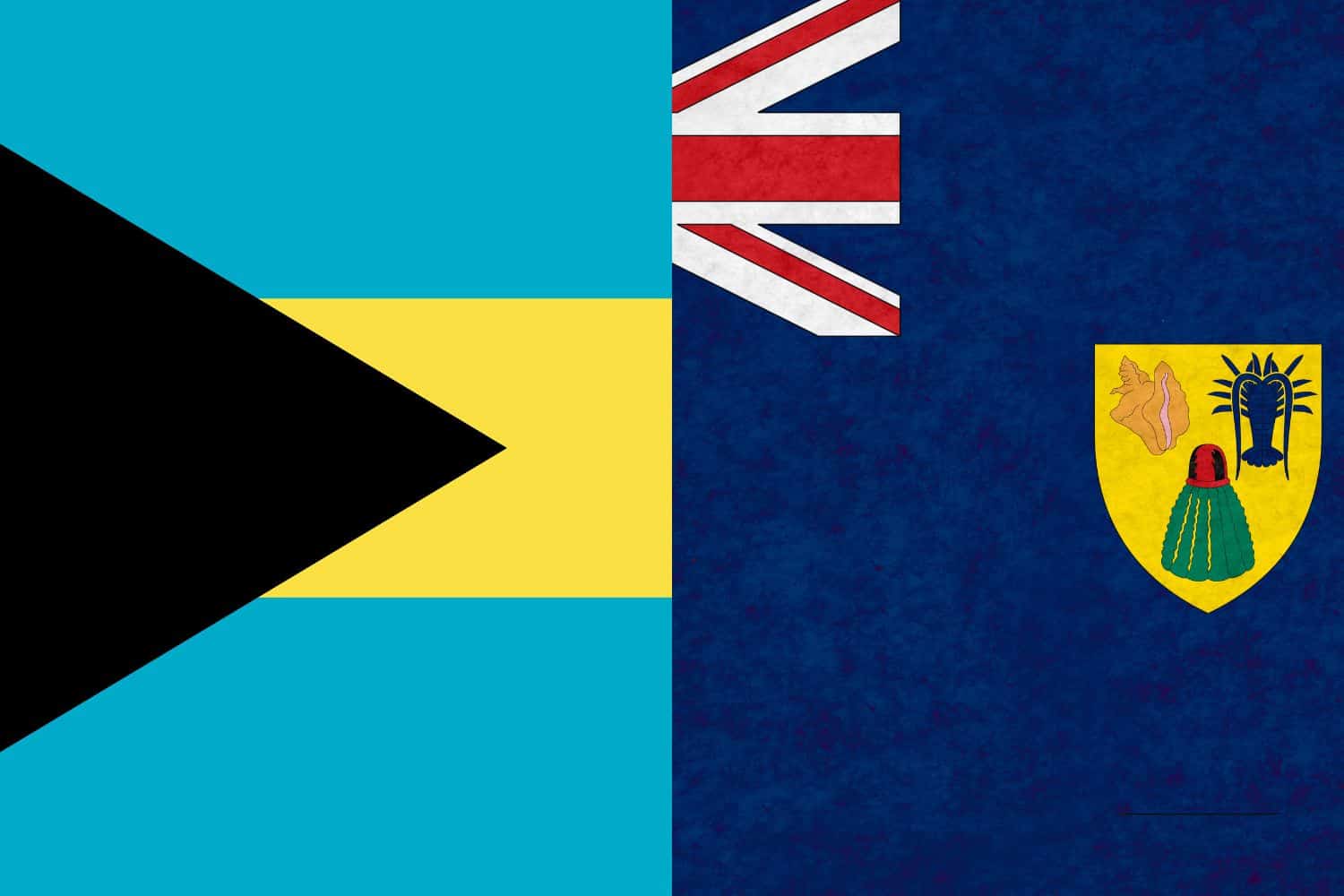
Similarity: Both flags feature maritime symbols reflecting their coastal geography and British colonial history.
Difference: The Turks and Caicos Islands flag is a British Blue Ensign featuring the Union Jack in the canton and a badge with island emblems on the fly. The Bahamian flag uses a combination of colors in horizontal bands and a black equilateral triangle.
Frequently Asked Questions (FAQs)
Explore answers to common questions regarding the Bahamas flag picture. From its historical roots to the meaning behind its symbols, uncover succinct and educational replies that tackle queries often raised by those intrigued about the flag of the Bahamas.
When was The Bahamas flag adopted?
The Bahamian flag was adopted on July 10, 1973, when The Bahamas became an independent nation.
What do the colors and shapes on the Bahamian flag represent?
The aquamarine bands represent the crystal-clear waters surrounding the islands, the gold band reflects the sunlit beaches, and the black triangle symbolizes the strength and will of the Bahamian people.
Is the design unique to The Bahamas?
Yes, the design was chosen through a national competition and reflects the unique culture and heritage of The Bahamas.
Why does the flag include a black triangle?
The black triangle symbolizes the determination and strength of the Bahamian people, representing their resolve to develop and utilize their natural resources while working toward a brighter future.
What is the significance of the aquamarine bands?
The aquamarine bands represent the sparkling turquoise waters that surround the Bahamian islands, which are vital to the nation’s economy, culture, and identity.
Why was gold chosen for the central band?
The gold band symbolizes the vibrant golden beaches of The Bahamas, representing the nation’s warm hospitality, optimism, and tropical climate.
Is the flag flown differently during national events or holidays?
Yes, the flag is hoisted in full splendor during national celebrations like Independence Day, July 10, and other significant holidays. It is also raised to half-staff to honor national tragedies or the passing of important figures.
Are there any protocols for displaying the flag?
The flag should always be flown freely, never touching the ground. It must be hoisted briskly and lowered ceremoniously at sunrise and sunset or for special occasions. The flag must be retired respectfully when damaged or worn out.
